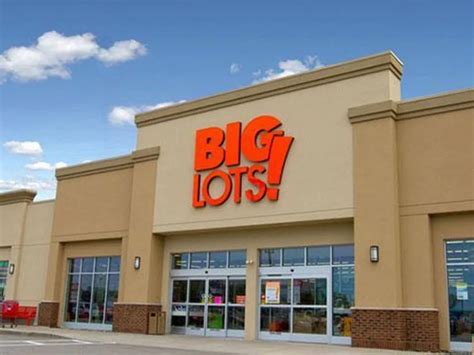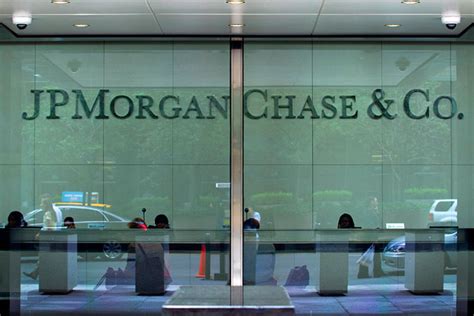
Big Lots is embarking on a significant reopening initiative, welcoming shoppers back to over 70 stores across the United States this week after a period of closures for updates and improvements. The move is part of a broader strategy to revitalize the brand and enhance the customer experience, signaling a renewed focus on brick-and-mortar locations amid evolving retail trends.
The Columbus, Ohio-based discount retailer confirmed the reopening plans, emphasizing the company’s commitment to providing value and convenience to its customer base. These reopenings follow strategic closures aimed at optimizing the store portfolio and reinvesting in locations poised for success. “We are excited to welcome customers back to our newly renovated stores,” a company spokesperson stated, highlighting the expected positive impact on local communities and customer satisfaction. The company aims to leverage these revamped stores to boost sales and strengthen its market position in the competitive discount retail sector.
The announcement comes at a crucial time for Big Lots, as the retailer navigates a dynamic economic landscape and changing consumer preferences. By investing in store renovations and focusing on operational efficiencies, Big Lots is positioning itself to capitalize on opportunities and deliver long-term growth. The retailer’s strategy includes enhancing its merchandise offerings, improving store layouts, and implementing technology upgrades to create a more seamless and engaging shopping experience.
Strategic Rationale Behind the Reopenings
Big Lots’ decision to reopen these 70+ stores is underpinned by a multifaceted strategic rationale. The closures preceding these reopenings were not indicative of a company-wide retrenchment but rather a calculated effort to optimize the retailer’s footprint. By temporarily closing underperforming or outdated stores, Big Lots could channel resources into comprehensive renovations, ensuring that reopened locations meet contemporary customer expectations.
Key elements driving the reopening strategy include:
-
Enhanced Customer Experience: Modernized store layouts, improved lighting, and updated fixtures contribute to a more inviting and efficient shopping environment. These enhancements aim to extend customer dwell time and increase the likelihood of purchases.
-
Operational Efficiency: Renovations often incorporate improvements to store operations, such as streamlined checkout processes, optimized inventory management systems, and energy-efficient upgrades. These changes reduce operational costs and improve overall profitability.
-
Merchandise Presentation: Reopened stores feature enhanced merchandising strategies, allowing Big Lots to showcase its diverse product offerings more effectively. This includes strategic product placement, eye-catching displays, and curated collections that cater to local market demands.
-
Competitive Positioning: The discount retail sector is highly competitive, with players like Dollar General, Dollar Tree, and Family Dollar vying for market share. By investing in store renovations, Big Lots aims to differentiate itself from competitors and attract a broader customer base.
-
Community Engagement: Reopening stores after renovations signals a renewed commitment to local communities. Big Lots aims to be a valued community partner by providing jobs, offering affordable products, and supporting local initiatives.
Financial Implications and Performance Expectations
The reopening spree carries significant financial implications for Big Lots. The company has invested capital in store renovations, which it expects to yield a positive return through increased sales and improved profitability. During the closures, Big Lots likely experienced a temporary dip in revenue, but the long-term expectation is that the revamped stores will more than compensate for this short-term loss.
Analysts will closely monitor several key performance indicators (KPIs) to gauge the success of the reopening strategy:
-
Comparable Store Sales (Comp Sales): This metric measures the sales performance of stores open for at least one year. A significant increase in comp sales at reopened stores would indicate that the renovations are resonating with customers.
-
Foot Traffic: Tracking the number of customers visiting reopened stores is crucial for assessing the effectiveness of marketing efforts and the appeal of the updated store environment.
-
Average Transaction Value: Monitoring the average amount spent per transaction provides insights into customer spending habits and the success of upselling and cross-selling strategies.
-
Customer Satisfaction Scores: Gathering feedback from customers through surveys and online reviews helps Big Lots understand their perceptions of the renovated stores and identify areas for further improvement.
-
Inventory Turnover: Efficient inventory management is essential for maximizing profitability. Reopened stores are expected to demonstrate improved inventory turnover rates as a result of optimized merchandising and streamlined operations.
Impact on the Competitive Landscape
Big Lots’ reopening initiative has implications for the broader discount retail landscape. As the company invests in its brick-and-mortar presence, it intensifies competition with other major players in the sector. This competitive pressure can benefit consumers through lower prices, increased product variety, and improved shopping experiences.
Key competitive dynamics to watch include:
-
Pricing Strategies: Big Lots will likely adjust its pricing strategies to attract customers to the reopened stores. This could involve offering special promotions, discounts, and loyalty rewards.
-
Merchandise Assortment: Big Lots may refine its merchandise assortment to better align with local market demands and differentiate itself from competitors. This could involve expanding its offerings in key categories such as home goods, furniture, and seasonal items.
-
Marketing and Advertising: Big Lots will need to ramp up its marketing and advertising efforts to create awareness of the reopened stores and drive traffic. This could involve a mix of traditional advertising (e.g., print, TV, radio) and digital marketing (e.g., social media, email, search engine optimization).
-
Customer Service: Providing exceptional customer service is crucial for building loyalty and attracting repeat business. Big Lots will need to ensure that its employees are well-trained and equipped to handle customer inquiries and resolve issues effectively.
Challenges and Risks
Despite the potential benefits of the reopening strategy, Big Lots faces several challenges and risks:
-
Economic Uncertainty: The retail sector is highly sensitive to economic fluctuations. A slowdown in the economy could negatively impact consumer spending and reduce demand for Big Lots’ products.
-
Supply Chain Disruptions: Disruptions to global supply chains could lead to inventory shortages and increased costs, impacting Big Lots’ ability to meet customer demand and maintain competitive pricing.
-
Labor Market Dynamics: Tight labor market conditions could make it difficult for Big Lots to attract and retain qualified employees, particularly in key roles such as store managers and sales associates.
-
Changing Consumer Preferences: Consumer preferences are constantly evolving. Big Lots must stay abreast of these changes and adapt its merchandise offerings and marketing strategies accordingly.
-
Competition from Online Retailers: Online retailers like Amazon continue to pose a significant threat to brick-and-mortar stores. Big Lots must find ways to differentiate itself and offer unique value propositions that attract customers to its physical locations.
Long-Term Outlook
The success of Big Lots’ reopening initiative will depend on its ability to execute its strategic plan effectively and navigate the challenges and risks outlined above. If the company can successfully enhance the customer experience, improve operational efficiencies, and adapt to changing consumer preferences, it has the potential to achieve sustainable growth and strengthen its position in the discount retail sector.
The reopening of these stores represents a significant investment in Big Lots’ future. By modernizing its store base and focusing on customer satisfaction, the company is positioning itself for long-term success in a competitive market. The retailer’s commitment to value and convenience, combined with its enhanced store environment, could attract a wider range of customers and drive sales growth. The company is betting on a revitalized brick-and-mortar strategy to resonate with shoppers seeking affordable and diverse product offerings.
Detailed Breakdown of the Reopening Strategy
To fully grasp the scope and potential impact of Big Lots’ reopening spree, a more detailed examination of the various facets of the strategy is warranted. This includes a closer look at the store renovation process, the types of enhancements being implemented, and the company’s broader operational and marketing plans.
The Store Renovation Process
The store renovation process is a comprehensive undertaking that involves a range of activities, from initial planning and design to construction and final inspection. Big Lots likely employs a dedicated team of project managers, architects, and contractors to oversee the renovations and ensure that they are completed on time and within budget.
Key steps in the store renovation process include:
-
Assessment and Planning: The first step involves assessing the condition of the existing store and identifying areas that need improvement. This includes evaluating the store layout, fixtures, lighting, flooring, and other key elements. Based on this assessment, a detailed renovation plan is developed, outlining the scope of work, timeline, and budget.
-
Design and Permitting: Once the renovation plan is finalized, architects and designers create detailed drawings and specifications for the updated store. These plans must comply with local building codes and regulations, and the necessary permits must be obtained before construction can begin.
-
Construction and Installation: The construction phase involves demolishing outdated fixtures, installing new flooring, upgrading lighting systems, and making other necessary structural changes. This phase also includes installing new shelving, displays, and signage to enhance the store’s visual appeal.
-
Technology Integration: Modern retailers rely on technology to improve operational efficiency and enhance the customer experience. As part of the renovation process, Big Lots likely integrates new technologies such as point-of-sale (POS) systems, inventory management software, and customer relationship management (CRM) platforms.
-
Final Inspection and Quality Control: Before reopening the store, a final inspection is conducted to ensure that all work has been completed to the required standards. This includes verifying that all fixtures are properly installed, that the lighting is adequate, and that the store is clean and safe for customers.
Types of Enhancements Being Implemented
The specific enhancements being implemented as part of the store renovations vary depending on the needs of each individual location. However, some common upgrades include:
-
Improved Store Layouts: Reconfigured store layouts are designed to improve traffic flow, enhance product visibility, and create a more intuitive shopping experience. This may involve widening aisles, creating designated zones for specific product categories, and optimizing the placement of key merchandise displays.
-
Updated Fixtures and Displays: New fixtures and displays are used to showcase merchandise more effectively and create a more visually appealing store environment. This may include installing new shelving, display cases, and mannequins.
-
Enhanced Lighting: Upgraded lighting systems are designed to improve visibility, create a more inviting atmosphere, and reduce energy consumption. This may involve installing LED lighting fixtures, which are more energy-efficient and longer-lasting than traditional lighting options.
-
Modernized Flooring: New flooring is installed to improve the store’s appearance and create a more comfortable shopping experience. This may involve replacing outdated carpet with new tile or laminate flooring.
-
Technology Upgrades: As mentioned earlier, technology upgrades are an integral part of the renovation process. This may include installing new POS systems, self-checkout kiosks, and digital signage.
-
Energy-Efficient Upgrades: In addition to upgrading lighting systems, Big Lots may also implement other energy-efficient upgrades, such as installing new HVAC systems and improving insulation. These upgrades can reduce energy consumption and lower operating costs.
Operational and Marketing Plans
The reopening of the renovated stores is supported by comprehensive operational and marketing plans designed to drive traffic, increase sales, and enhance customer satisfaction.
Key elements of the operational plan include:
-
Staff Training: Employees are trained on the updated store layout, new technologies, and enhanced customer service protocols. This ensures that they are well-equipped to provide a positive shopping experience for customers.
-
Inventory Management: Optimized inventory management systems are used to ensure that the right products are in stock at the right time. This helps to minimize stockouts and maximize sales.
-
Supply Chain Optimization: Big Lots works with its suppliers to ensure a smooth and efficient supply chain. This helps to reduce lead times and minimize disruptions to the flow of goods.
Key elements of the marketing plan include:
-
Grand Reopening Events: Grand reopening events are held to celebrate the reopening of the renovated stores and attract customers. These events may include special promotions, discounts, giveaways, and entertainment.
-
Local Advertising: Big Lots utilizes local advertising channels, such as newspapers, radio, and online advertising, to create awareness of the reopened stores.
-
Social Media Marketing: Social media platforms, such as Facebook, Instagram, and Twitter, are used to engage with customers and promote the reopened stores.
-
Email Marketing: Email marketing campaigns are used to communicate with existing customers and inform them about the reopened stores.
-
Public Relations: Big Lots works with local media outlets to generate positive press coverage of the reopening initiative.
Frequently Asked Questions (FAQ)
1. Why did Big Lots close these stores in the first place?
Big Lots strategically closed these stores to facilitate renovations and improvements. The closures allowed the company to reinvest in these locations and enhance the overall shopping experience for customers. According to the company, the closures were a calculated move to optimize their store portfolio and focus on locations with the greatest potential for success.
2. What kind of renovations were made to the reopened stores?
The renovations included improvements to store layouts, updated fixtures and displays, enhanced lighting, modernized flooring, technology upgrades, and energy-efficient enhancements. These upgrades aim to create a more inviting and efficient shopping environment, improve merchandise presentation, and reduce operational costs.
3. How will these reopenings affect Big Lots’ financial performance?
Big Lots anticipates that the reopenings will positively impact their financial performance through increased comparable store sales, higher foot traffic, improved average transaction values, and enhanced customer satisfaction scores. The company has invested capital in these renovations and expects to see a return on investment through increased revenue and profitability.
4. How does this reopening spree impact Big Lots’ competition with other discount retailers?
The reopening initiative intensifies competition within the discount retail landscape. By investing in store renovations, Big Lots aims to differentiate itself from competitors such as Dollar General, Dollar Tree, and Family Dollar. The company’s enhanced store environment and improved customer experience could attract a broader customer base and increase its market share.
5. What challenges does Big Lots face in ensuring the success of these reopened stores?
Big Lots faces several challenges, including economic uncertainty, potential supply chain disruptions, labor market dynamics, changing consumer preferences, and competition from online retailers. To ensure the success of the reopened stores, the company must effectively execute its strategic plan, adapt to changing market conditions, and provide exceptional customer service.









